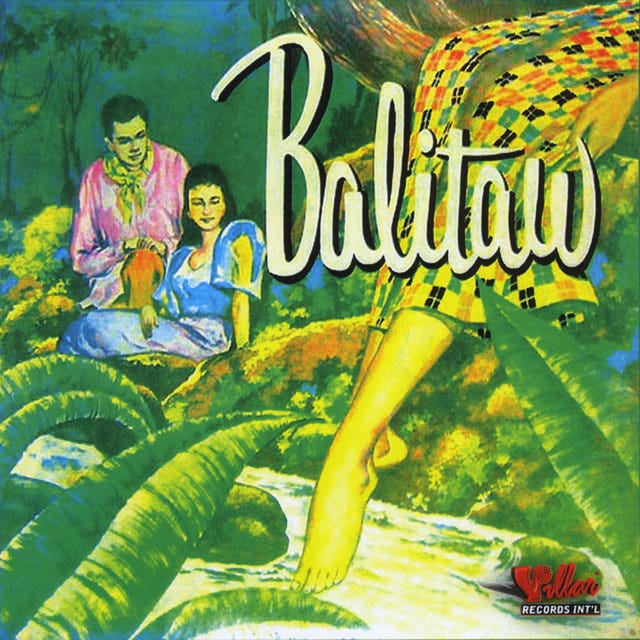EVERY GENRE PROJECT - April 3 - Filipino Rondalla
Genre of the Day - Filipino Rondalla
Album of the Day - Balitaw by Sylvia La Torre & Leopoldo Silos (unknown year; likely 1950s)
April 3, 2024
The Philippines has one of the strangest and longest colonial histories of any nation. In sheer cultural terms, fighting successfully to maintain use of your native tongues while taking the colonizing countries’ instruments and incorporating them into your dances sounds like an ideal outcome. Despite being colonized by Spain for nearly 350 years, Spanish was never able to displace the archipelago’s native languages. Nor did the Philippines ever become a settler colony like Spain’s holdings in the Americas. The linguistic aspect is in part due to the fact that the islands had far too many languages with enough speakers that somehow surplanting them all was unfeasible. Instead, missionaries would learn the local common languages in order to spread Christianity, which was wildly successful for the religion as well as Mariah Carey’s Christmas catalog.
However, colonial rule was obviously still obviously less-than-ideal for the people of the Philippines, even if they didn’t experience as much sheer brutality that occurred in the Americas. Early into colonial rule, Spain instituted its encomienda system of forced labor, and some Filipinos were enslaved in the 1560s in the Americas before the African slave trade became the dominant mechanism of slave-taking. The exploitative nature of Spanish colonization and the subsequent American occupation in the first half of the 20th century planted a deep seed of resistance in the Philippines especially spurred forth by the writings of national hero José Rizal. The Philippines finally shook the Spaniards off. Along with 20% of the Tagalog language featuring spanish loanwords, though, the conquistadores left a deep imprint on music.
I’ve mentioned and often ragged on Spain 13 times thus far in this column (not including this article) yet somehow we haven’t gotten around to talking about Spain’s deep love for stringed instruments. While Spain didn’t originate the guitar—it most likely descended from an ancient Greek stringed instrument—it’s perhaps the country most synonymous with it and other stringed instruments. Spain loves string instruments so much that it originated the rondalla, an instrumental ensemble consisting of some formation of string instruments. The bandurria in particular has a whopping 14 strings (as someone who could barely play the guitar for a class I never actually completed, this is mind-boggling) and took off as the centerpiece of the rondalla in the Philippines.
The instrumentation today sounds familiar because the bandurria’s timbre sounds nearly identical to the Italian mandolin. But while it’s recognizable, I’ve never heard it explored so deeply. Given the sheer amount of notes being played at any one time and the bright aural texture of the strings, the extensive use of the bandurria makes for an inevitably lively, zippy sound. Opener “Dalaga’t Binata” explores the capabilities of rondalla as dance music with additional smacking percussion and extra chipperness. Sylvia La Torre’s operatic voice does her country proud, as the Philippines is often known for loving and producing excellent vocalists. While the songs figure similarly melodically with an upbeat flair, the depth of the strings overlapping makes for a delightful, immersive experience. The rondalla is so beloved that the tradition is being preserved abroad. As much as Filipino singers are a blueprint, if you’re looking to master the bandurria, you know who to go to.




